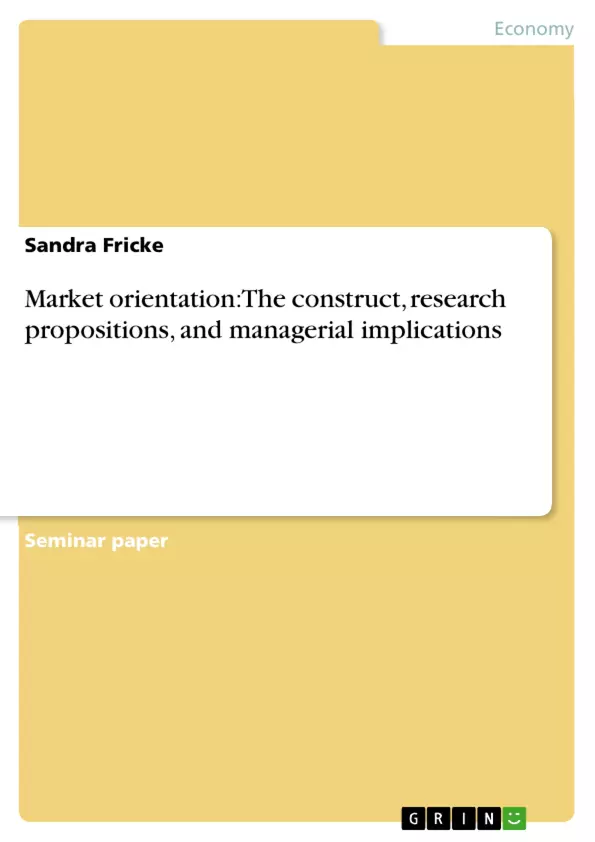Very little attention has been given to organizational processes, such as market orientation. That is one reason why hardly anybody can explain the term. Market orientation means the implementation of the marketing concept and represents a long-term advantage. Because a market orientation is not easily engendered, it may be considered an additional and distinct form of sustainable competitive advantage. In this paper the domain of the market orientation construct will be clarified and a working definition provided.
Table of Contents
- Introduction: What does Market Orientation mean?
- Marketing Concept
- Four main pillars
- Hurdles a company has to face
- Market Intelligence and the Business Marketing System
- Market Orientation: the construct
- Antecedents to a Market Orientation
- Consequences of a Market Orientation
- Implementing the New Marketing Concept
- Conclusion
Objectives and Key Themes
The main objective of this paper is to clarify the concept of market orientation and to provide a working definition. The paper explores the evolution of the marketing concept, its four main pillars, and the hurdles that companies must face in its implementation. Furthermore, the paper discusses the antecedents and consequences of a market orientation, emphasizing its importance as a form of sustainable competitive advantage.
- The evolution of the marketing concept
- The importance of customer needs and satisfaction
- The role of coordinated marketing and internal marketing
- The relationship between market orientation and profitability
- The concept of market orientation as a sustainable competitive advantage
Chapter Summaries
The first chapter introduces the concept of market orientation and its importance in achieving long-term advantage. It emphasizes that market orientation is not easily achieved and thus represents a distinct form of sustainable competitive advantage. Chapter 2 explores the marketing concept, its key principles, and its evolution from a sales-oriented to a customer-oriented approach. It discusses the four main pillars of the marketing concept: target market, customer needs, coordinated marketing, and profitability. Chapter 3 examines the crucial role of market intelligence and the business marketing system in implementing the marketing concept. The chapter delves into the concept of market orientation in detail, exploring its antecedents and consequences in Chapter 4. Chapter 5 focuses on implementing the new marketing concept, emphasizing the importance of aligning internal and external marketing strategies.
Keywords
The key words and focus topics of this work revolve around the concept of market orientation, its antecedents and consequences, and its role as a sustainable competitive advantage. This includes the marketing concept, customer needs, coordinated marketing, profitability, market intelligence, business marketing system, and the implementation of a market-oriented approach. The paper also highlights the importance of customer satisfaction, internal and external marketing, and the role of market orientation in achieving organizational goals. The work draws on theoretical insights and practical examples to illustrate the concepts discussed.
- Citation du texte
- Sandra Fricke (Auteur), 2001, Market orientation: The construct, research propositions, and managerial implications, Munich, GRIN Verlag, https://www.grin.com/document/3428



